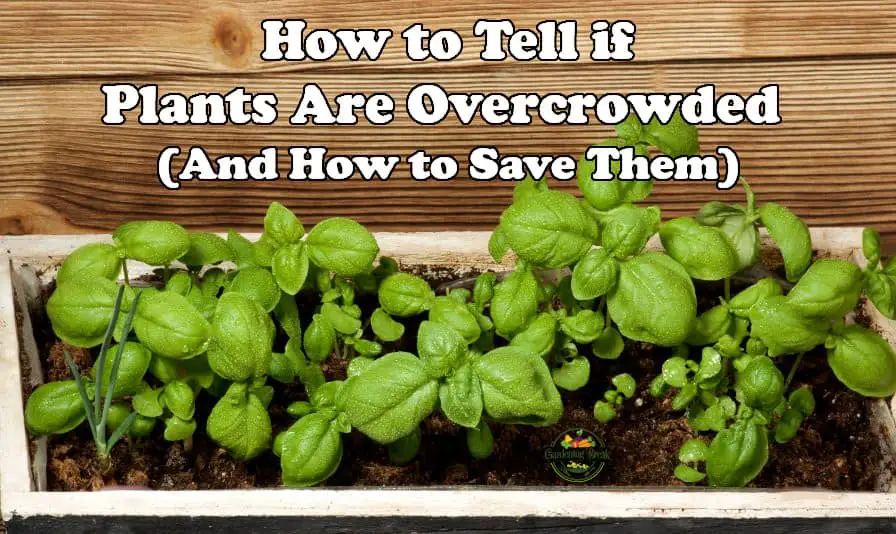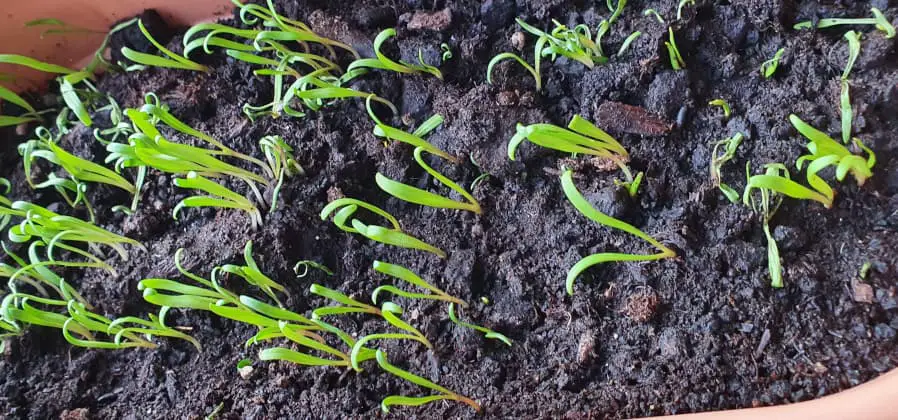This post contains affiliate links.
When plants are overcrowded the risk of problems such as mold, overwatering, various pests and diseases, and much more is a lot higher than if the plants had more space. I’ve made the mistake of overcrowding plants many times in my earlier years as a gardener, so I have learned precisely how to tell if your plants are overcrowded and how to save them, which is what I want to teach you in this article.
Stunted growth and lack of air and space around plants are the most common and clear signs that they are overcrowded, but there are also other signs. Overcrowded plants stop growing because the roots run out of space and good airflow is necessary to reduce the risk of mold and other problems.

These are just the most common and clear signs that plants are overcrowded, but there are more. To make it as easy for you as possible, I have made a list of 6 signs to look out for and after that, I have written an easy guide on how to save your overcrowded plants.
6 Signs That Plants Are Overcrowded
There are many reasons why your plants should have the space they need. If you plant them too close to each other, they will become overcrowded, which can lead to many different problems.
The best way to prevent these problems is to know how to tell if your plants are overcrowded. Fortunately for you, I have sown or planted too densely many times over the years, so I have learned what to look out for. Here are 6 signs you should look for.
1. The plants don’t have air all the way around them
Airflow is crucial for most plants, so you want to make sure there is air all the way around them. It not only reduces the risk of mold but also a number of other pest and disease-related problems.
2. The plants grow very slowly or stop growing entirely
Stunted growth is a very common sign that plants are overcrowded. The most common reason for this is that the roots run out of space to grow in the ground, which prevents them from obtaining enough nutrients and water to keep the plants growing.
3. Leaves turn yellow due to nutrient and water deficiencies
When too many plants are growing in too little space, they have to compete for nutrients and water in the soil. This means that they run out much faster than if they had enough growing space, which can cause leaves to turn yellow or brown. You can combat this by giving them more fertilizer and water, although you have to be very careful not to overfertilize or overwater them since that can kill them.
4. Moist or humid conditions around the plants
When plants are growing too close to each other, the airflow will not be nearly as good as if the plants were further apart. This leads to humid growing conditions, which can significantly increase the risk of pests and diseases attacking the plants. Mold especially becomes a risk since it thrives in humid conditions.
5. Pests and diseases attack all the plants instead of one
Pests and diseases are something we just have to deal with when gardening. It is almost impossible to completely prevent it from all of your plants. That said, perhaps the most effective thing you can do is to give your plants the space they need because if they are too close to each other, the pests and diseases can spread very quickly and easily and affect all your plants before you can stop it.
6. None or only a few of the plants produce flowers and fruit
Whether you are growing vegetables, fruits, herbs, flowers, or something else, plants need proper conditions before they can flower and produce anything. Since overcrowded plants compete for nutrients, water, root space, and even sunlight, some, or even all of them, might not get what they need to flower and produce fruit.
If you can see some or all of these signs on your plants, there is a fairly high chance that they are overcrowded. If that is the case, you should keep reading as I will explain how you can save them.
How to Save Overcrowded Plants (Both Small and Large Plants)
Sowing or planting too densely is a very common problem. I have certainly done it many times over the years myself.
The best way to save your plants if they are overcrowded depends on how large and established they are. I will first explain how you can save your plants if they are large and well-established and after that, how you can save seedlings that have been sown too densely.
The best way to save large, well-established plants that have become overcrowded is to move enough of them to another location so that the remaining ones have air all the way around them. Use a shovel to dig around the plants you want to move and make sure to keep as many roots as possible intact.
The best way to make sure you keep enough roots and soil on the plants you want to move is to use a good shovel.
To save overcrowded seedlings like mine in this photo from a few years ago, the process is a bit different.

The easiest way to save seedlings that have been sown too densely is to thin them out once they start sprouting. Do so by carefully pulling some of the seedings out of the soil and discarding them.
I have learned that it is much easier to thin out seedlings without damaging the remaining ones if you push lightly on the soil around the seedlings you want to remove. If you don’t, you risk pulling out too much soil instead of just the seedling and its roots, which can harm the seedlings you want to keep.
Other than knowing how to thin out plants that are too close to each other, choosing the right plants is extremely important, so I recommend that you read this article, where I describe 43 plants you can grow in small spaces.
What Happens When Plants Are Overcrowded (11 Consequences)
There are many consequences of letting plants become overcrowded. Most of them come down to how large the plants can grow and how much fruit they can produce, but there is more than that,
Here are some of the consequences of letting plants be overcrowded:
- The plants grow slower and slower until they stop entirely. The primary reason for this is that the roots run out of space and can’t obtain the water and nutrients the plants need.
- The plants will produce very little fruit or no fruit at all. This is because plants need proper growing conditions to produce anything and overcrowded plants often don’t get what they need to produce.
- Pests and diseases will spread much faster between plants that are too close to each other. The closer plants are, the easier it is for pests and diseases to spread between them. This is especially true if the plants are growing very densely since that can create humid conditions, which help the pests and diseases spread even faster.
These are the most significant consequences of letting plants get overcrowded, but there are a lot of other things that can happen. I have written an article, where I cover 11 things that can happen if plants don’t have enough space to grow, so if you want to learn more about that, I recommend you read that.

